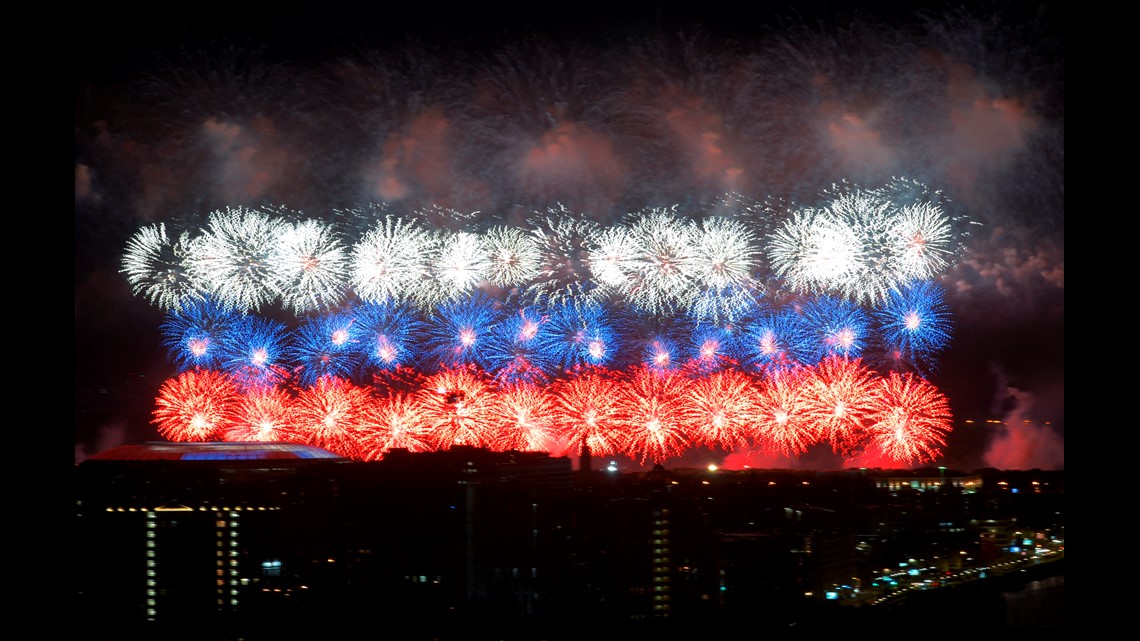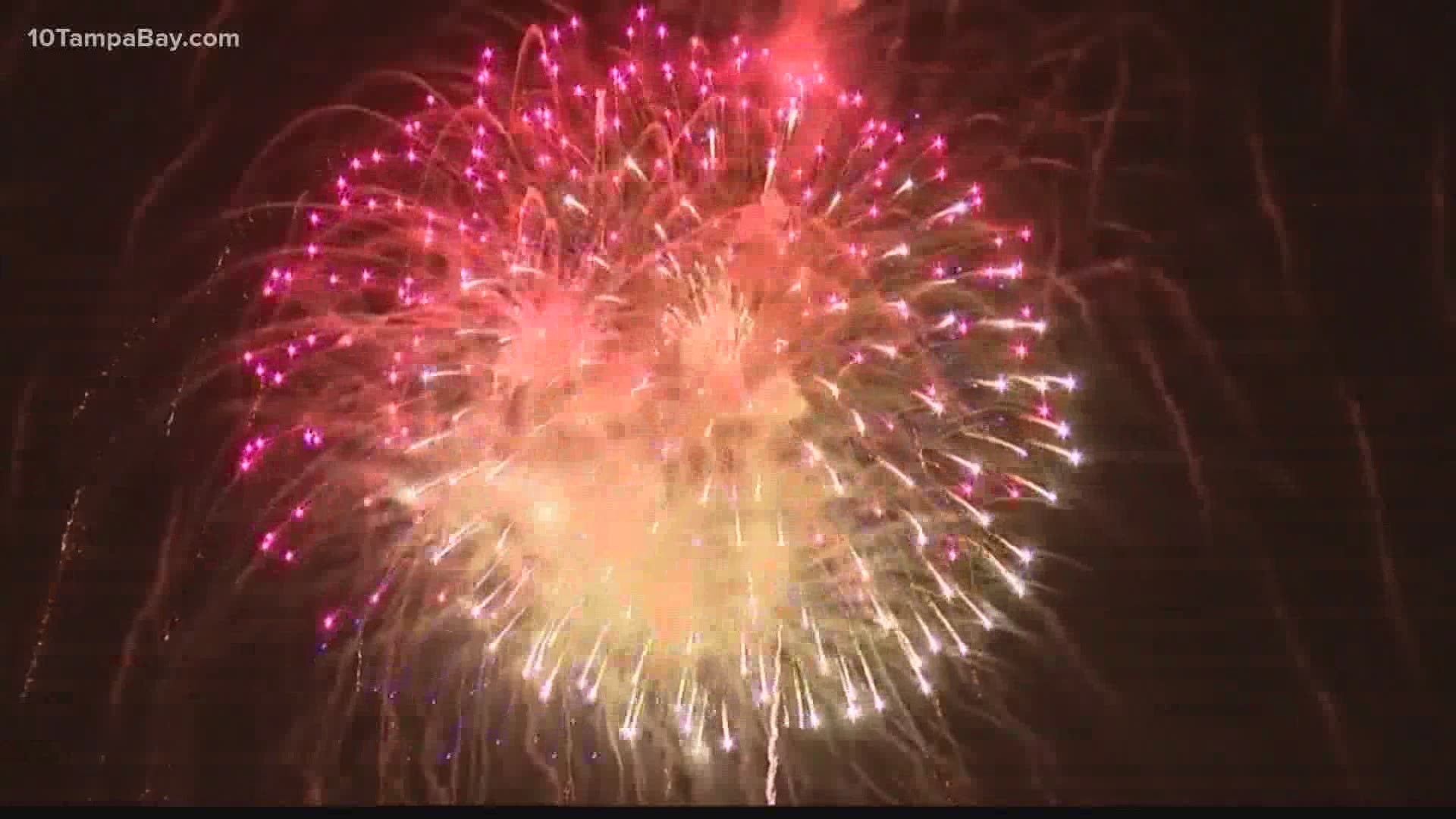ST. PETERSBURG, Fla. — It's fun to watch fireworks, but have you ever thought about how the different colors you see are actually made?
It's all chemistry. Pyrotechnics use chemicals to make those bright lights.
Let's start with your basic firework.
The source of most fireworks is a small tube called an aerial shell that is shot into the air before it explodes at a safe height.
This shell contains chemicals that create all of the lights, colors and sounds of a firework.
Inside there are small globs of explosive materials called stars. It's these stars that give fireworks their color when they explode.


Typically, light from fireworks is produced by Luminescence. The explosion of gunpowder in the aerial shell creates a lot of heat, which causes metal salts in the stars to absorb heat energy and emit light.
As the electrons inside the atoms of these metals become excited by the heat, the electrons then almost immediately go to a lower energy state.
That's when they emit light and a specific color. That color is based on the metal used like strontium, barium, sodium, copper or other mixtures.
- Coronavirus in Florida: State adds another 6,563 cases
- 1 suspect kills self, ex-wife of former soldier in custody in disappearance of Vanessa Guillen, Fort Hood says
- Secretary accused of stealing more than $750K from Winter Haven church
- Growing number of children in Hillsborough, Pinellas counties test positive for COVID-19
- Everything to know about the new St. Pete Pier opening, including how to get a reservation
- Tampa family finds gator with missing limbs on their front porch
- Coronavirus in Florida: Hospitalizations, deaths, new cases
►Stay In the Know! Sign up now for the Brightside Blend Newsletter



